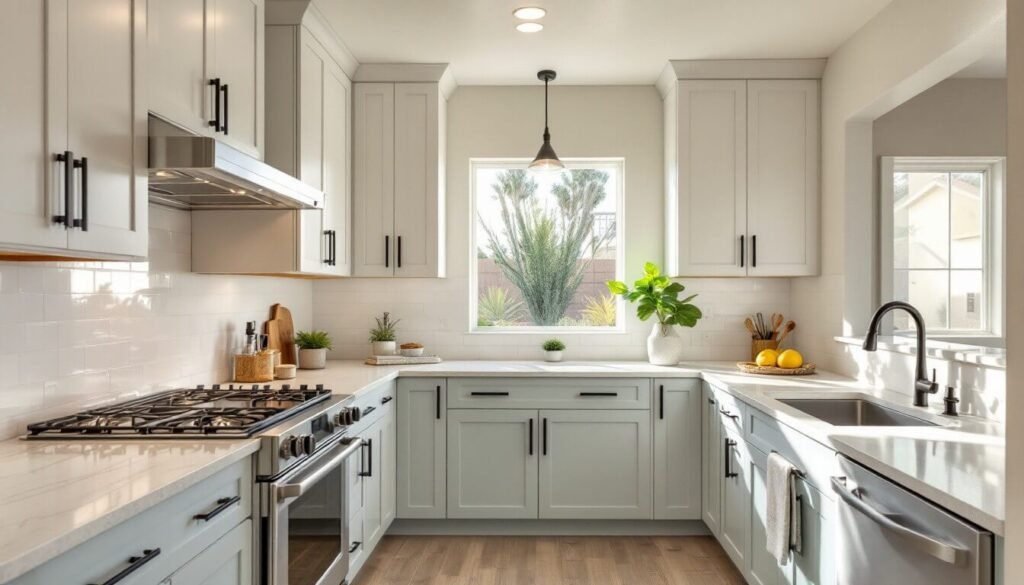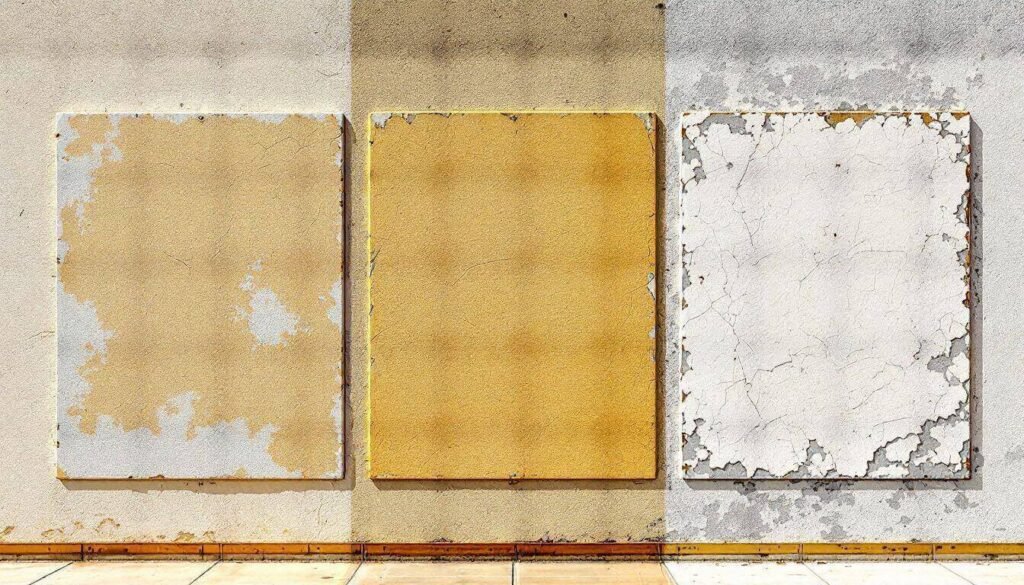Navigating HOA Painting Rules In Paradise Valley
Paradise Valley: How to Keep Up With Homeowner Associations
Paradise Valley is known for its stunningly beautiful luxury homes, where a fresh coat of paint can make a property shine. For homeowners, updating paint is one of the simplest ways to boost curb appeal and protect your investment. But in this area, there’s more to painting than simply picking a color and hiring a contractor. Paradise Valley’s homeowner associations (HOAs) have detailed rules that guide every aspect of exterior painting. Missing a step or using the wrong color can lead to fines or delayed projects.
- Navigating HOA Painting Rules In Paradise Valley
This post breaks down what every homeowner in Paradise Valley should generally know about HOA painting requirements. You’ll find information on reading your HOA’s CC&Rs (the official rules), the approval process, choosing paint colors that align with community standards, and key tips for ongoing maintenance. Following these guidelines not only keeps your home in top shape but also helps you avoid costly disputes.
Keep in mind, rules may vary by neighborhood, so always review your HOA’s specific documents before starting any paint work. When in doubt, ask your HOA board or consult painting professionals with local experience. This article offers general information based on common practices and doesn’t provide legal advice. Checking your own association’s rules is the best way to avoid surprises and enjoy a smooth project from start to finish.
Key HOA Painting Rules in Paradise Valley
Even a simple paint job in Paradise Valley comes with rules set by your HOA. These requirements keep the neighborhood beautiful and protect home values, but they also bring responsibilities for homeowners. Understanding your HOA’s legal framework and common Restrictions can save you hassles, extra costs, and help you avoid fines or do-overs.
Legal Framework and Enforcement
Arizona law gives HOAs like yours the legal backing to enforce painting and exterior maintenance standards. To do this, they must follow fair and transparent processes. Associations can set paint color rules for exteriors, trims, garages, and even fences, but that power comes with limitations. Also, interior painting projects aren’t typically governed by the same rules.
Here’s what you need to know:
- HOAs must treat all homeowners equally. Arizona’s Civil Rights Act prohibits associations from making painting decisions based on race, religion, gender, disability, or family status.
- Rules must be clear and consistently enforced. If you get a notice about a paint violation, you have the right to a written explanation and a reasonable chance to fix the issue.
- You can appeal a fine or request a hearing. Arizona law protects your right to challenge HOA decisions if you disagree.
- Some displays are protected. Your HOA cannot stop you from showing U.S. flags or installing solar panels, but paint color falls under their control.
- Always check your own documents. Each HOA can have different timelines, penalties, and procedures. For details on your property, reach out to your HOA board.
This is general guidance. Always get specifics from your community’s leadership before you paint.
Common Restrictions on Colors and Materials
Most Paradise Valley HOAs aim for a look that blends with desert surroundings. You will rarely find neon hues or wild color pairings here. Instead, most rules focus on earthy and understated palettes.
Be prepared for:
- Approved palettes: You may need to pick from a list of allowed colors. These include earth tones, soft pastels, tans, browns, beiges, and neutrals that match the local scenery.
- Consistent design: HOAs often require you to stick to the original look—so trims, doors, and accent areas must fit the home’s theme.
- Material and brand limits: Some HOAs go further, specifying paint brands or required UV-resistant finishes that handle harsh summer sun and dust. This helps prevent fading or peeling.
- Updates are possible: While changes to color options happen slowly, some associations review and update their palettes. Always check for the latest booklet before buying paint.
- Professional help: Work with local painters who know HOA rules. They’ll help you stay compliant and can often recommend finishes trusted for Arizona homes.
Aligning your choices with HOA guidance makes the process smoother and keeps your curb appeal sharp for years to come.
Navigating the Approval Process
Getting your paint project greenlit by your Paradise Valley HOA doesn’t need to feel intimidating. This step is about keeping your plans clear, your paperwork organized, and setting the stage for a smooth project. Here’s how to approach each part of the approval process with confidence.
Preparing Your Application
Stepping into the approval process starts with a well-prepared application. Submitting the right details upfront can save you time and avoid surprises.
Use this checklist to build a strong case:
- Current photos of your home’s exterior from multiple angles
- Proposed color palette from the HOA-approved list (include sample chips if possible)
- Specific paint brand and product details (some HOAs require certain brands for consistency and durability)
- A basic sketch or marked-up photo to show where each color will be placed, if your project changes multiple areas
You’ll find application forms on your HOA’s online portal or by visiting the management office during business hours. Start the process early and read all instructions to avoid missing something small. It helps to communicate directly with the HOA board if you have doubts or unique requests. Remember, some associations require you to use a licensed contractor, so check if this box needs to be ticked early on.
What Happens After Submission
Once you hit “submit” or drop off your paperwork, your application moves through an official review by the HOA’s architectural committee or board. Most HOAs in Paradise Valley aim to review within a few weeks, but some decisions can take up to 30 days, depending on meeting schedules.
You might hear back with:
- A request for more information or tweaks to better fit community standards
- Conditional approval giving you the green light as long as you address certain changes
- Denial with clear reasons, empowering you to revise and resubmit if needed
If your color choices or contractor details don’t fit, expect to edit and reapply. Once approved, download or print the documentation and store it safely; future projects or touch-ups may require proof of HOA approval. Throughout the process, keep your tone polite and patient, even if there are delays. Most homeowners find that staying cooperative turns approval into a routine step rather than a roadblock.
Choosing Colors and Maintaining Compliance
When you’re subject to HOA rules, selecting the right paint color for your Paradise Valley home is more complicated than just reviewing a few paint swatches. Homeowners face strict HOA guidelines designed to keep the neighborhood visually balanced and pleasant. Following these standards not only preserves the area’s look but also keeps you in good standing with your association.
Approved Color Palettes for Paradise Valley
Paradise Valley HOAs require homeowners to select exterior paint colors from a curated list. These palettes focus on natural tones that fit well with the Sonoran Desert backdrop. Common choices include:
- Warm beiges that mimic sand and stone
- Soft taupes and tans for a timeless, understated style
- Desert sages and muted greens, perfect for homes near natural landscapes
- Subtle blues often appear as accent colors on shutters, doors, or trim
These colors don’t just blend into the desert scenery. They create a sense of unity across the neighborhood, preventing any one home from standing out in a way that disrupts the overall desert vibes and aesthetics the HOA’s prioritizing. If you want to see options before you choose, many HOAs list their approved palettes on their websites. Local paint stores such as Dunn-Edwards or Sherwin-Williams also offer HOA palette books, making it easy to sample colors at home. While new colors sometimes get added, core neutrals stay steady over the years. Sticking to these palettes means your home will always look right at home.
Tips for Long-Term Maintenance
Maintaining the look of your freshly painted home doesn’t end once the paint dries. Arizona’s intense sun and dry heat can quickly wear down colors, especially on south-facing walls.
- Schedule visual inspections every spring and fall. Look for fading, chipping, or areas where paint peels early, focusing on high-impact walls.
- Use premium, UV-resistant exterior paints designed for hot climates. Brands recommended by local paint stores often perform best and may be required by your HOA.
- Keep detailed records of your paint color, brand, type, and proof of HOA approval. This documentation helps if you need to touch up or prove you followed the rules.
Fix problems as soon as they appear. Prompt repairs not only protect your home’s exterior but also show your HOA that you care about compliance. Well-maintained paint jobs support stable property values and keep your home as attractive as the day you finished painting. Regular upkeep avoids warnings and makes renewal projects far less stressful.
Avoiding Common Mistakes and Violations
Even diligent homeowners can run into trouble if they miss a detail or overlook a step in HOA painting rules. Mistakes often lead to delays, extra costs, and frustration. Getting familiar with the most frequent slip-ups will help keep your project stress-free and your home looking its best.
Skipping HOA Approval
One of the fastest ways to get a violation notice is to paint before receiving formal approval. No matter how minor your touch-up or how neutral your chosen color may seem, most Paradise Valley HOAs require homeowners to submit a detailed plan and receive written sign-off before starting any exterior painting.
- Always complete and submit your application with color samples and contractor information.
- Wait for your HOA’s response, which typically takes two to four weeks.
- Starting work early, even for spot repairs, counts as a violation in most associations.
Fines or forced repainting are common outcomes if you skip this important step.
Choosing Unapproved Colors
Even variations that seem minor can trigger a violation. HOAs in Paradise Valley tend to stick to a set palette designed for visual harmony with the desert environment. They often won’t allow exceptions, because once an exception is allowed for one household, others will likely request exceptions as well.
To avoid problems:
- Double-check your color choices with the most recent approved paint palette.
- Bring your color samples to the HOA review board if asked.
- Do not rely on old color lists, as communities sometimes refresh their approved selections.
If you use an unapproved color, you may be required to repaint the entire area at your own expense. This is one of the most expensive painting mistakes homeowners make.
Not Reviewing Updated Rules or CC&Rs
Rules on exterior painting sometimes change. Missing an update from your HOA can cause you to break a new rule without realizing it.
Be sure to:
- Review the HOA’s CC&Rs (Covenants, Conditions, and Restrictions) every time you start a paint project.
- Ask your HOA for the latest painting guidelines if you don’t receive updates automatically.
- Keep paperwork from your last approved project for quick reference.
Confusion over details like brand requirements or accent color limits is a common cause of avoidable violations.
Incomplete or Vague Applications
HOA committees expect detailed information up front. Submitting vague or missing data slows down your approval and increases the chance your application is rejected.
A strong application should include:
- Clear, labeled photos of your home.
- Exact paint names and sample chips.
- Contractor contact information.
- Well-marked diagrams showing where each color will go.
If your application is incomplete, the HOA will likely ask you to resubmit or clarify details, leading to project delays.
Ignoring Required Maintenance
Most Paradise Valley HOAs don’t just care about paint color, but also about how fresh and consistent it looks. Faded, peeling, or dirty paint can be a violation even if color and brand are correct.
Regular upkeep helps avoid warnings. Inspect your home each season, especially after monsoon storms or extended heat waves. Address repairs early to keep your home in good standing and avoid official notices.
Failing to Communicate With the HOA
Assuming the HOA won’t notice a small change or skipping communication can quickly escalate into conflict. Transparency builds trust and saves everyone time.
Tips for painless communication:
- Notify your HOA of any painting plans, even minor ones.
- Respond promptly if they request more details or clarification.
- Save written confirmation of every approval (digital or hard copy).
A strong communication trail helps resolve disputes and shows you’re serious about following the rules.
Common Consequences of Violations
Not following painting rules rarely goes unnoticed. HOAs are required by Arizona law to provide written notice outlining the problem and giving you time to fix the issue.
Frequent consequences include:
- Written notices that detail what must be changed.
- Fines starting small but increasing with each notice or delay.
- Mandatory repainting if the violation is not fixed within the allowed window.
- Delays to other HOA approvals until the violation is resolved.
Here’s a quick table summarizing typical mistakes and their outcomes:
| Mistake | Common Consequence |
|---|---|
| Skipping Approval | Fine, forced repainting |
| Using Unapproved Colors | Mandatory repainting |
| Incomplete Application | Processing delays |
| Ignoring Maintenance | Warning notice, eventual fine |
| Not Communicating With HOA | Delays, strained relations |
These setbacks are avoidable. Take each rule seriously. When in doubt, check with your HOA for clarification before you paint. If you receive a violation notice, respond quickly and ask for clear next steps. While HOAs enforce strict standards, Arizona law requires time to fix most mistakes before any fine is final.
By knowing these pitfalls, you’ll find it much easier to maintain compliance and protect your investment in your Paradise Valley home.
Frequently Asked Questions
Navigating HOA painting rules in Paradise Valley can be confusing, especially if you’re painting your home for the first time or dealing with your HOA’s approval process. This section answers the most common questions Paradise Valley homeowners have about HOA painting requirements, permissions, and their rights. If your concern isn’t addressed here, your HOA’s management or a local legal professional can offer personalized advice.
Staying proactive and organized will keep your Paradise Valley paint project on track and stress-free. These guidelines address the most common concerns, but always confirm details with your own HOA documents.
Homeowner Association Violations Are Preventable
Knowing your HOA painting rules, getting the right approvals, picking approved colors, and staying on top of maintenance help protect both your investment and the character of Paradise Valley. By following these steps, you support the beauty and harmony of your community, making it a place neighbors are proud to call home.
Stay up-to-date with your HOA’s guidelines and don’t hesitate to ask your board or a trusted local expert if you need advice. Every project runs more smoothly and avoids costly headaches when you take the time to check the rules first.
If you have tips or stories about your own HOA painting experiences, share them in the comments below. For homeowners unsure about requirements, contact your association before making changes. This article is for general guidance only and shouldn’t be taken as legal advice. Thanks for reading and supporting the high standards that keep Paradise Valley special.


